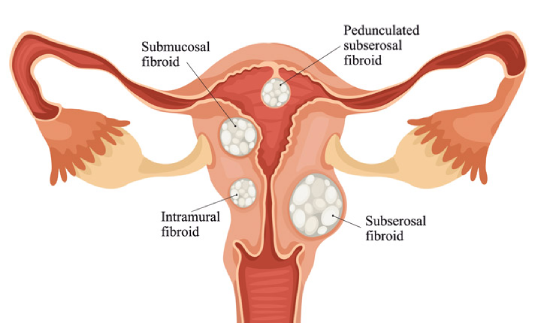
Uterine fibroids are common in reproductive age groups. They are noncancerous growth of the uterus also called leiomyoma or myoma.
The incidence of fibroid is 20-40% in women of reproductive age and 11-19% in perimenopausal age
Fibroids range in size from seedling, undetectable by the human eye, to bulky masses that can distort and enlarge the uterus.
Symptoms
Most women with fibroids do not have symptom.
Symptoms are dependent on the location, size and number of fibroids.
The most common signs and symptoms of uterine fibroids include:
- Menstrual periods lasting longer than normal
- Pelvic pressure or Pain
- Increase frequency urination
- Heavy menstrual bleeding
- Difficulty in emptying the bladder
- Constipation
- Backache or Leg pains
- Rarely, a fibroid can cause acute pain when it outgrows its blood supply, and begins to degenerate.
Diagnosis
The gold standard diagnostic modality for uterine fibroids appears to be ultrasonography, with magnetic resonance imaging being a close second option in complex clinical circumstances
Pelvic examination: Uterine fibroids are frequently found incidentally during a routine pelvic exam. Your doctor may feel irregularities in the shape of your uterus, suggesting the presence of fibroids.
Magnetic resonance imaging (MRI): This imaging test can help in more detail review of the size and location of fibroids and help to determine appropriate treatment options
Complications
Although uterine fibroids usually aren't dangerous, they can cause discomfort and may lead to complications such as a drop in red blood cells (anaemia), which causes fatigue, from heavy blood loss.
Pregnancy and fibroids
Fibroids usually don't interfere with getting pregnant. However, it's possible that fibroids — especially submucosal fibroids — could cause infertility or pregnancy loss.
A large fibroid can interfere with the morphology of tubal and its function
Fibroids may also raise the risk of certain pregnancy complications, such as placental abruption, fetal growth restriction and preterm delivery, Intrauterine growth restriction.
Treatment
Is dependent on the age of the patient, location of fibroid and associated symptoms.
